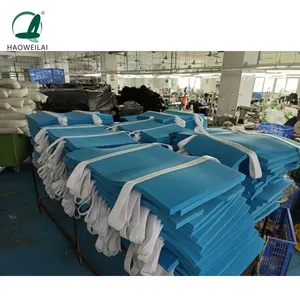

Custom Shockproof Epe Foam Materials Shockproof Packaging Materials Custom Cutting EPE Pearl Cotton Inside Package

Factory Wholesale Price OEM/ODM High Density Pu Foam Sponge Block Polyurethane Memory Foam Sheet Roll For Mattress/sofa/cushion


















EPE foam, also known as expanded polyethylene foam, is a semi-rigid, non-cross linked and closed-cell type of foam. This foam is a moldable material produced from low-density polyethylene (LDPE) resins through a physical foaming process. Its unique properties make it a popular choice in various applications in different industries. EPE foam machinery efficiently produces good-quality, lightweight, and resilient foam products, ideal for packaging, insulation, and cushioning applications.
EPE foam comes in several forms including epe foam sheet, epe foam roll, and even epe foam machinery. Each form is designed to suit a specific application. The foam sheet is widely used in packaging, flooring underlay, insulation, and even in sports equipment. The epe foam roll, on the other hand, is commonly used for packaging delicate goods due to its excellent shock absorption properties. Lastly, epe foam machinery refers to the equipment used in the production of epe foam products.
The versatility of epe foam has led to its expansive use in a variety of sectors. In packaging, epe packaging foam is favored for its excellent cushioning properties, protecting goods from damage during transit. This is particularly useful in the electronics industry where epe foam packaging is used to protect delicate components from impact and static electricity. In addition to packaging, epe foam is also used in the construction industry as a thermal insulation material. The expanded polyethylene sheet is installed in walls, roofs, and floors to reduce heat transfer and improve energy efficiency. Moreover, with its buoyancy and low water absorption properties, epe foam is also used in the production of marine equipment and sports gear such as life vests and camping mats.
EPE foam is basically produced from expanded polyethylene, a type of plastic with excellent resistance to impact, moisture, and chemicals. During the production process, the polyethylene is melted, extruded and then expanded to form foam. The result is a lightweight, flexible and resilient material that can be further processed into a variety of products. The process of producing expanded polyethylene foam sheet involves feeding the LDPE resin into an extruder, where it’s heated until it melts. The molten plastic is then forced through a die to form a continuous sheet. This sheet is cooled and cut into the desired lengths.
EPE foam offers several features that make it a preferred material in many applications. It is lightweight and flexible, yet strong and durable. It has excellent shock absorption and vibration damping properties, making it an ideal packaging material for delicate items. In addition, epe foam is also resistant to water, chemicals, and ultraviolet light, adding to its durability. It is a recyclable material, making it an environmentally friendly choice in applications where sustainability is a concern. However, it's essential to note that while epe foam is generally safe, there is a question about whether epe foam toxic effects can be a concern. While epe foam does not contain any known toxic substances, it is still advisable to use it appropriately and avoid ingesting or inhaling it.
EPE foam is a versatile and practical material that offers a wide range of benefits in various applications. Its resilience, flexibility, and durability make it an excellent choice for many industries.